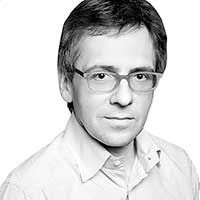Honoring Filipino heroes

The last Monday of August is celebrated as National Heroes’ Day. It is a time dedicated to the heroes of the Philippine Revolution and commemorates the start of the Philippine Revolution. The circumstances surrounding the start of the revolution have often been disputed by historians.
We all agree that the revolution began with a gathering of members of the Katipunan (Society), a secret organization formed to fight the Spanish colonizers. There have been competing accounts of the actual place and date of the event. There is also a consensus that the symbolic event that took place was the tearing up of the cedula. The revolution started with a “ Cry” of rebellion. There have been, however, competing accounts about the location and the actual date of the “ Cry”. From 1908 to 1963, the official stance was that the “Cry” occurred on Aug. 26 in Balintawak. In 1963, the government, under then President Diosdado Macapagal, declared a shift to Aug. 23 in Pugad Lawin.
The major reason for these different accounts is that there have been several different stories written by those who claimed to have been at the event. Actually, I find the account written by Guillermo Masangkay as the most interesting story. Unfortunately his version is that it happened on Aug. 26, 1896, at Balintawak.
It seems that the officially accepted version is that of Pio Valenzuela. Here is his account:
“The first place of refuge of Andres Bonifacio, Emilio Jacinto, Procopio Bonifacio, Teodoro Plata, Aguedo del Rosario and myself was Balintawak, the first five arriving there on Aug. 19 and I {i.e. Pio Valenzuela} on Aug. 20, 1896. The first gathering where some 500 members of the Katipunan met on Aug. 22, 1896 was the house and yard of Apolonio Santos at Kangkong. Aside from the persons mentioned above, among those who were there were Briccio Pantas, Alejandro Santiago, Ramon Bernardo, Apolonio Samson and others. Here, views were only exchanged and no resolution was debated or adopted. It was at Pugad Lawin, the house, storehouse, and yard of Juan Ramos, son of Melchora Aquino, where over 1000 persons of the Katipunan met and carried out considerable debate and discussion on Aug. 23, 1896. The discussion was whether or not the revolution against the Spanish government should be started on Aug. 29, 1896. After the tumultuous meeting, many of those present tore their cedula certificates and shouted “Long Live the Philippines! Long Live the Philippines!”
This holiday was established to honor the sacrifice and heroism of all national heroes. An interesting highlight of this celebration is that in 1995 a historical committee was established and they produced a list of key national heroes who should be honoured for their heroism and sacrifice for their country. The list included: Jose Rizal, Andres Bonifacio, Emilio Aguinaldo, Apolinario Mabini, Marcelo H. Del Pilar, Sultan Dipatuan Kudarat, Juan Luna, Melchora Aquino, Gabriela Silang.
I have been writing about Filipino heroes and major historical events during my several years of writing. I have also recommended books that should be read bv people interested in Philippine history. Let me recommend a few more books. There are very few books that focus on specific provinces. Here are two that focus on Batangas and Pampanga.
Battle for Batangas: A Philippine Province at War by Glenn A. May who was a professor of history at the University of Oregon when he wrote the book. In his introduction, May contests the view of Philippine historian Teodoro Agoncillo that the backbone of the Philippine Revolution was the masses and that they were betrayed by the economic elite. May writes: “... the economic and political elites of Batangas constituted the backbone of the local resistance. Some elite Batanguenos led the military units that fought against the US Army, others provided food, money and general support to the resistance forces.”
May also considered the effects of old-boy networks, family connections, patron-client bonds, municipal politics and religious belief on the local resistance activities. He is able to paint an interesting picture of life in Batangas during that period.
BRAVEHEARTS: Kapampangan Rebels, Radicals and Renegades Who Changed History published by Holy Angel University, Angeles Pampanga.
Kapampangan is the local dialect (or mother tongue) of an ethnic group that comprise the predominant population in Pampanga and Southern Tarlac. All the Philippine regions weave myths about themselves. Kapampangans are no exception. They believe that they are the best, the first and the most in everything, from cuisine to arts and crafts, from politics to pulchritude. They also like to brag that they are the most rebellious. They have been called traitors by some, and fighters for social and peasant justice by others.
The book has historical notes on major events like the land tenure problems, the rise of communism and the Socialist Party and the birth of the “Hukbalahap” which was the result of the union between the two parties – Communist and Socialist.
The focus of the book, however, is on Kapangpangan personalities who changed history. It begins with Tarik, the first Filipino to die for his country. Then came other names: Pedro Abad Santos, founder of the Socialist Party; Jose Abad Santos, the Chief Justice who was assassinated by the Japanese; Luis Taruc, head of the “Hukbalahap;” Bernabe Buscayno, founder of the NPA, Philippine President Diosdado Macapagal and Ninoy and Cory Aquino, both Kapampangans who changed Philippine history.
* * *
An Invitation for Young Writers, ages 8-15:
Young Writers’ Hangout is back. Zoom with us on September 12 & 26, 2-3 pm. Contact writethingsph@gmail.com. 0945.2273216
Email: [email protected]
- Latest
- Trending





























